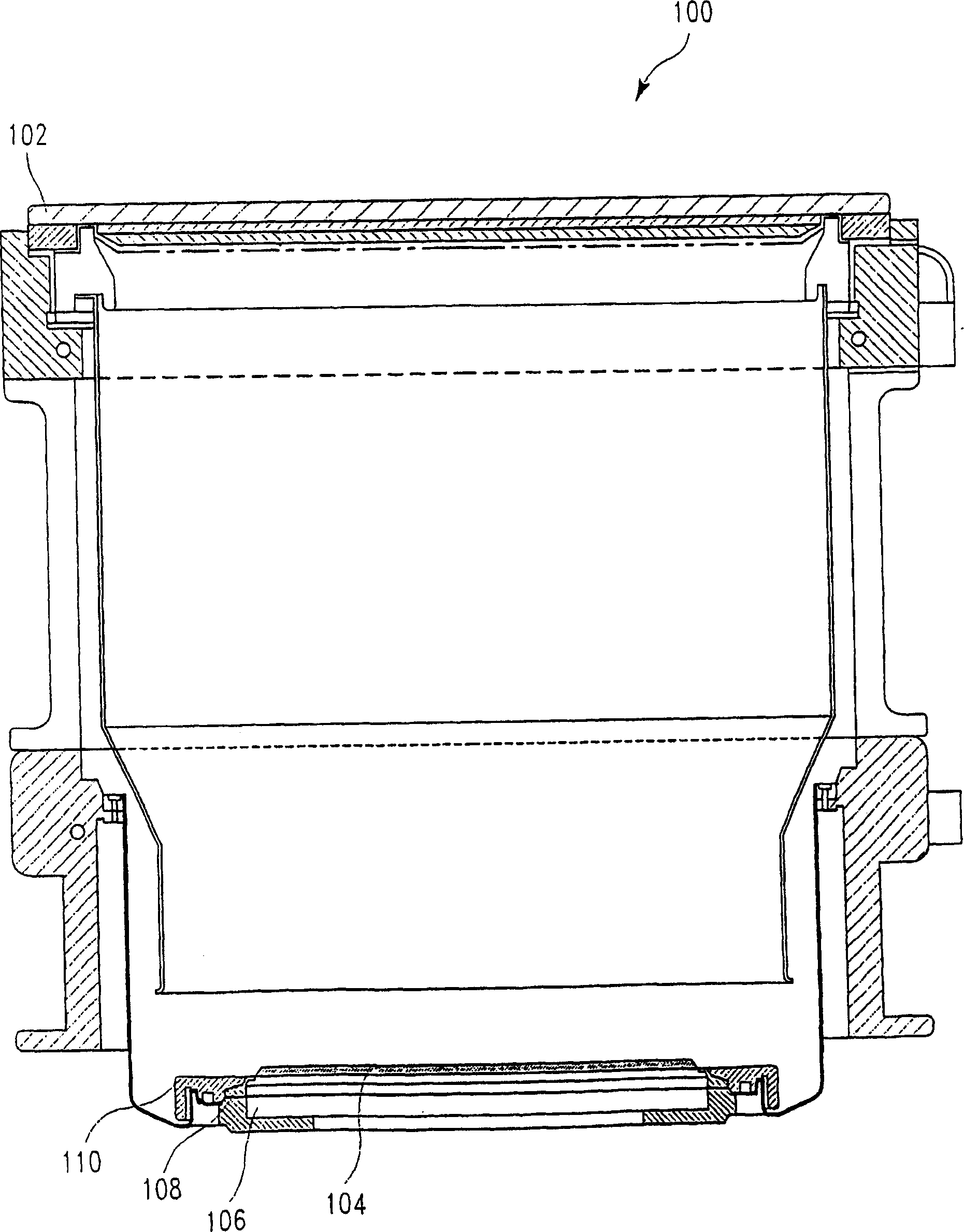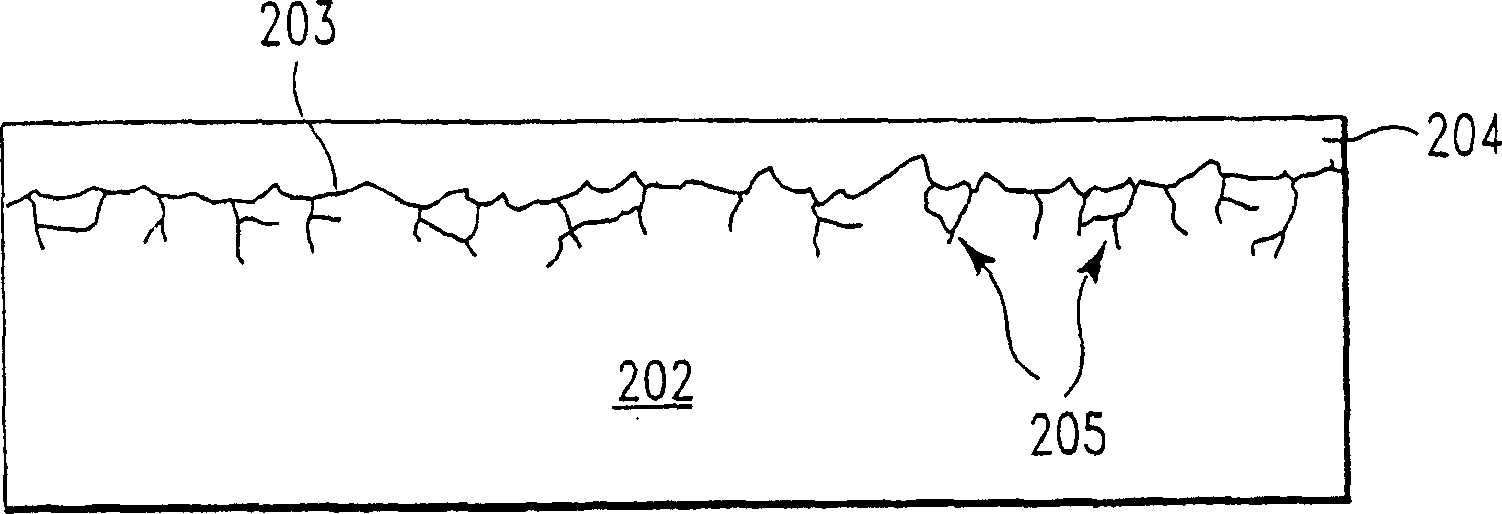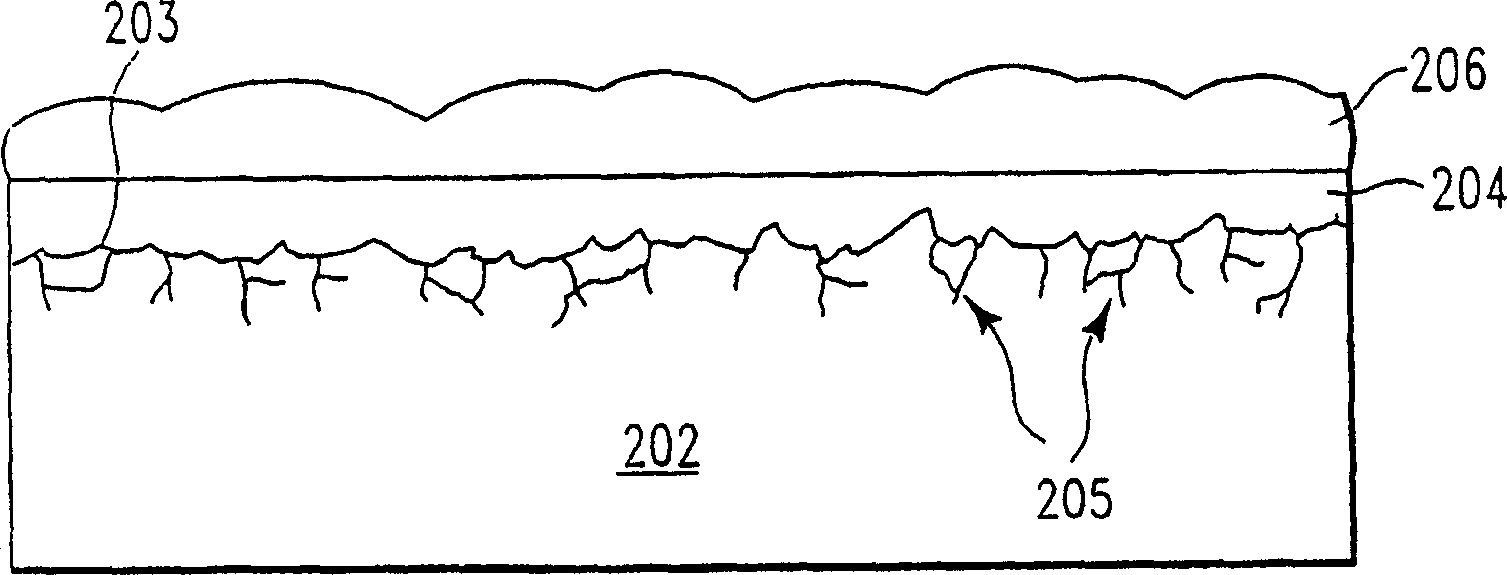Methods of roughening ceramic surface
A ceramic surface, roughening technology, used in the improvement of metal adhesion of insulating substrates, manufacturing tools, welding/welding/cutting items, etc.
- Summary
- Abstract
- Description
- Claims
- Application Information
AI Technical Summary
Problems solved by technology
Method used
Image
Examples
Embodiment Construction
[0021] DETAILED DESCRIPTION OF THE PREFERRED EMBODIMENT
[0022] The invention discloses a method for roughening the ceramic surface by chemical etching, thermal etching, or laser micromachining to form mechanical interlocks on the ceramic surface. The method can be used to improve the adhesion of upper and lower ceramic surfaces used in semiconductor processing chambers. To illustrate the invention, applicants describe the invention as an example of use in a physical vapor deposition (PVD) chamber. Ceramic surfaces have mechanical interlocks formed by chemical etching, thermal etching, or laser micromachining. Exemplary processing conditions for carrying out the methods of the invention are listed below.
[0023] As an introduction to the Detailed Description, it should be noted that, as used in this specification and the appended claims, the singular forms "a," "an," and "the" include plural referents unless the context clearly dictates otherwise. illustra...
PUM
| Property | Measurement | Unit |
|---|---|---|
| diameter | aaaaa | aaaaa |
| depth | aaaaa | aaaaa |
| depth | aaaaa | aaaaa |
Abstract
Description
Claims
Application Information
 Login to View More
Login to View More - R&D
- Intellectual Property
- Life Sciences
- Materials
- Tech Scout
- Unparalleled Data Quality
- Higher Quality Content
- 60% Fewer Hallucinations
Browse by: Latest US Patents, China's latest patents, Technical Efficacy Thesaurus, Application Domain, Technology Topic, Popular Technical Reports.
© 2025 PatSnap. All rights reserved.Legal|Privacy policy|Modern Slavery Act Transparency Statement|Sitemap|About US| Contact US: help@patsnap.com



